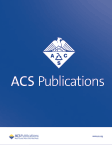摘要 GS03-12:阿多曲珠单抗与曲妥珠单抗辅助治疗新辅助化疗和 HER2 靶向治疗后残留的侵袭性 HER2 阳性早期乳腺癌的 III 期研究:KATHERINE最终IDFS和最新OS分析
IF 3.4
Q2 PUBLIC, ENVIRONMENTAL & OCCUPATIONAL HEALTH
引用次数: 2
摘要
背景:HER2阳性早期乳腺癌(EBC)患者在接受新辅助化疗+HER2靶向治疗后,如果有浸润性疾病残留,复发和死亡的风险很高。设计 KATHERINE 时的标准疗法是在辅助治疗中继续使用相同的 HER2 靶向疗法 1 年。2018年KATHERINE的主要分析结果显示,辅助治疗阿多曲珠单抗埃姆坦辛(T-DM1)的侵袭性BC复发或死亡风险比曲妥珠单抗低50%。研究方法KATHERINE(NCT01772472/BO27938/NSABP B-50-I/GBG 77)是一项 III 期、开放标签、全球性研究,研究对象为经中心确诊的 HER2 阳性(免疫组化 3+ 或原位杂交阳性)原发性 BC(T1-4,N0-3,M0、M0),接受了新辅助化疗+HER2靶向治疗(必须包括一种类固醇类药物和曲妥珠单抗),随后进行了手术,病理记录显示乳房和/或腋窝淋巴结有残留浸润性疾病。手术后12周内,患者按1:1的比例随机接受T-DM1(3.6毫克/千克,静脉注射,每3周[q3w]一次)或曲妥珠单抗(6毫克/千克,静脉注射,每3周[q3w]一次)治疗,共14个周期。随机分组按照患者发病时的临床分期、激素受体状态、单一新辅助HER2靶向治疗与双重新辅助HER2靶向治疗以及新辅助治疗后的病理结节状态进行。患者按照当地标准接受放疗和/或内分泌治疗。主要终点是侵袭性无病生存期(IDFS)。我们报告的是最终的 IDFS 分析(将在报告约 384 例事件后进行)和预先计划的第二次中期总生存期(OS)分析(指定在同一时间进行)。结果中位随访时间为 8.4 年(101 个月),与曲妥珠单抗相比,T-DM1 的 IDFS 持续改善(未分层危险比 [HR] 0.54; 95% 置信区间 [CI] = 0.44, 0.66; p < 0.0001)。曲妥珠单抗的7年IDFS率从67.1%上升到T-DM1的80.8%,相差13.7%。在最终IDFS分析的临床截止日期,共报告了215例死亡病例。与曲妥珠单抗相比,T-DM1可将死亡风险大幅降低34%(未分层HR为0.66;95% CI = 0.51, 0.87;P = 0.0027)。T-DM1治疗组有89/743例患者死亡(12.0%),曲妥珠单抗治疗组有126/743例患者死亡(17.0%)。具有里程碑意义的 7 年 OS 率从使用曲妥珠单抗的 84.4% 提高到使用 T-DM1 的 89.1%;差异为 4.7%。主要亚组的 OS 和 IDFS 均有获益。治疗后期间,与研究治疗或研究程序相关的不良事件(AEs)发生率较低:T-DM1治疗组有3/740名患者(0.4%)发生≥3级相关不良事件,曲妥珠单抗治疗组有3/720名患者(0.4%)发生≥3级相关不良事件;严重相关不良事件分别有2/740名患者(0.3%)和4/720名患者(0.6%)发生。被归类为 "心脏疾病 "的相关不良反应在延长随访期的两组中都很少见。结论经过8.4年(101个月)的中位随访,T-DM1显著改善了HER2阳性EBC患者在新辅助治疗后残留侵袭性疾病的OS。随着随访时间的延长,T-DM1的IDFS获益在意向治疗人群中得以持续,并且没有出现新的安全性问题。两组患者均罕见心脏毒性。T-DM1是第一种能改善HER2阳性EBC患者手术后生存率的疗法,这些患者在接受新辅助治疗后仍有侵袭性疾病残留。目前正在进行随访,以进行最终的OS分析。引用格式:Sibylle Loibl, Max Mano, Michael Untch, Chiun-Shen Huang, Eleftherios Mamounas, Norman Wolmark, Adam Knott, Asna Siddiqui, Thomas Boulet, Beatrice Nyawira, Eleonora Restuccia, Charles Geyer.针对新辅助化疗和 HER2 靶向治疗后残留的侵袭性 HER2 阳性早期乳腺癌的辅助治疗 ado-trastuzumab emtansine 与曲妥珠单抗的 III 期研究:KATHERINE 最终 IDFS 和更新 OS 分析 [摘要]。In:2023年圣安东尼奥乳腺癌研讨会论文集;2023年12月5-9日;德克萨斯州圣安东尼奥。费城(宾夕法尼亚州):AACR; Cancer Res 2024;84(9 Suppl):Abstract nr GS03-12。本文章由计算机程序翻译,如有差异,请以英文原文为准。
Abstract GS03-12: Phase III study of adjuvant ado-trastuzumab emtansine vs trastuzumab for residual invasive HER2-positive early breast cancer after neoadjuvant chemotherapy and HER2-targeted therapy: KATHERINE final IDFS and updated OS analysis
Background: Patients with HER2-positive early breast cancer (EBC) who have residual invasive disease after neoadjuvant chemotherapy + HER2-targeted therapy have a high risk of recurrence and death. The standard of care when KATHERINE was designed was continuation of the same
HER2-targeted therapy in the adjuvant setting for 1 year. The primary analysis of KATHERINE in 2018 showed that the risk of recurrence of invasive BC or death was 50% lower with adjuvant ado-trastuzumab emtansine (T-DM1) than with trastuzumab.
Methods: KATHERINE (NCT01772472/BO27938/NSABP B-50-I/GBG 77) is a phase III, open-label, global study of patients with centrally confirmed, HER2-positive (immunohistochemistry 3+ or in situ hybridization-positive) primary BC (T1–4, N0–3, M0) who received neoadjuvant chemotherapy + HER2-targeted therapy, which had to include a taxane and trastuzumab, followed by surgery, with pathologically documented residual invasive disease in the breast and/or axillary lymph nodes. Within 12 weeks of surgery, patients were randomized 1:1 to T-DM1 (3.6 mg/kg intravenously [IV] every 3 weeks [q3w]) or trastuzumab (6 mg/kg IV q3w) for 14 cycles. Randomization was stratified by clinical stage at presentation, hormone receptor status, single vs dual neoadjuvant HER2-targeted therapy, and pathologic nodal status after neoadjuvant therapy. Patients received radiotherapy and/or endocrine therapy per local standards. The primary endpoint was invasive disease-free survival (IDFS). We report the final IDFS analysis, which was to occur after ~384 events had been reported, and the preplanned second interim analysis of overall survival (OS); specified to occur at the same time.
Results: With a median follow-up of 8.4 years (101 months), T-DM1 sustained the improvement in IDFS over trastuzumab (unstratified hazard ratio [HR] 0.54; 95% confidence interval [CI] = 0.44, 0.66; p < 0.0001). Landmark 7-year IDFS rates were increased from 67.1% with trastuzumab to 80.8% with T-DM1; a difference of 13.7%.
At clinical cutoff for the final IDFS analysis, 215 deaths had been reported. T-DM1 significantly reduced the risk of death by 34% compared with trastuzumab (unstratified HR 0.66; 95% CI = 0.51, 0.87; p = 0.0027). Deaths had occurred in 89/743 patients (12.0%) in the T-DM1 arm and 126/743 (17.0%) in the trastuzumab arm. Landmark 7-year OS rates were increased from 84.4% with trastuzumab to 89.1% with T-DM1; a difference of 4.7%.
OS and IDFS benefits were seen across key subgroups.
A low incidence of adverse events (AEs) related to study treatment or to study procedures was observed during the post-treatment period: Grade ≥3 related AEs occurred in 3/740 patients (0.4%) in the T-DM1 arm and 3/720 (0.4%) in the trastuzumab arm; serious related AEs, in 2/740 (0.3%) and 4/720 (0.6%), respectively. Related AEs classed as “cardiac disorders” were rare in both arms with extended follow-up.
Conclusions: After 8.4 years (101 months) median follow-up, T-DM1 significantly improved OS in patients with HER2-positive EBC with residual invasive disease after neoadjuvant therapy. The IDFS benefit of T-DM1 was sustained in the intention-to-treat population with longer follow-up, and no new safety issues emerged. Cardiac toxicity was rare in both arms. T-DM1 is the first therapy to show improved survival post-surgery in patients with HER2-positive EBC with residual invasive disease after neoadjuvant therapy. Follow-up is ongoing for the final OS analysis.
Citation Format: Sibylle Loibl, Max Mano, Michael Untch, Chiun-Shen Huang, Eleftherios Mamounas, Norman Wolmark, Adam Knott, Asna Siddiqui, Thomas Boulet, Beatrice Nyawira, Eleonora Restuccia, Charles Geyer. Phase III study of adjuvant ado-trastuzumab emtansine vs trastuzumab for residual invasive HER2-positive early breast cancer after neoadjuvant chemotherapy and HER2-targeted therapy: KATHERINE final IDFS and updated OS analysis [abstract]. In: Proceedings of the 2023 San Antonio Breast Cancer Symposium; 2023 Dec 5-9; San Antonio, TX. Philadelphia (PA): AACR; Cancer Res 2024;84(9 Suppl):Abstract nr GS03-12.
求助全文
通过发布文献求助,成功后即可免费获取论文全文。
去求助
来源期刊

ACS Chemical Health & Safety
PUBLIC, ENVIRONMENTAL & OCCUPATIONAL HEALTH-
CiteScore
3.10
自引率
20.00%
发文量
63
期刊介绍:
The Journal of Chemical Health and Safety focuses on news, information, and ideas relating to issues and advances in chemical health and safety. The Journal of Chemical Health and Safety covers up-to-the minute, in-depth views of safety issues ranging from OSHA and EPA regulations to the safe handling of hazardous waste, from the latest innovations in effective chemical hygiene practices to the courts'' most recent rulings on safety-related lawsuits. The Journal of Chemical Health and Safety presents real-world information that health, safety and environmental professionals and others responsible for the safety of their workplaces can put to use right away, identifying potential and developing safety concerns before they do real harm.
 求助内容:
求助内容: 应助结果提醒方式:
应助结果提醒方式:


